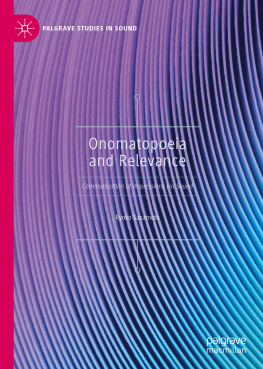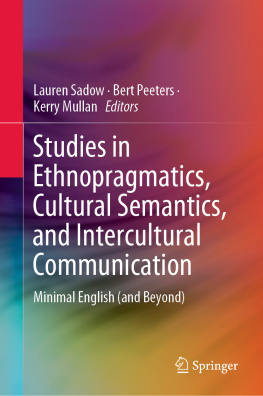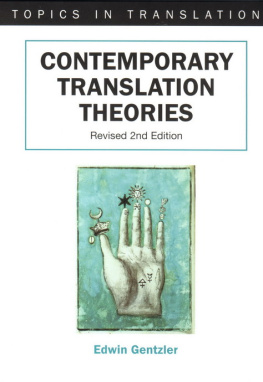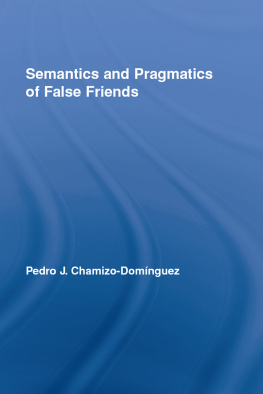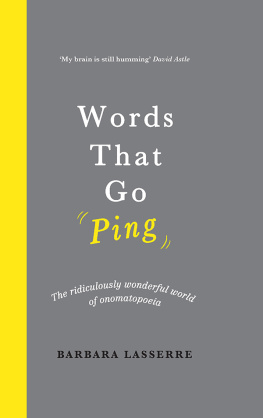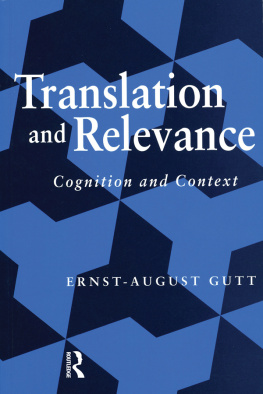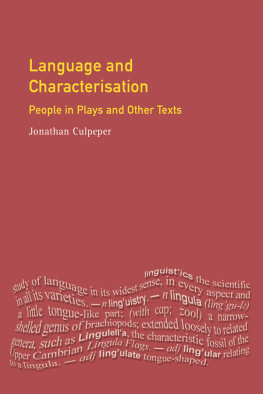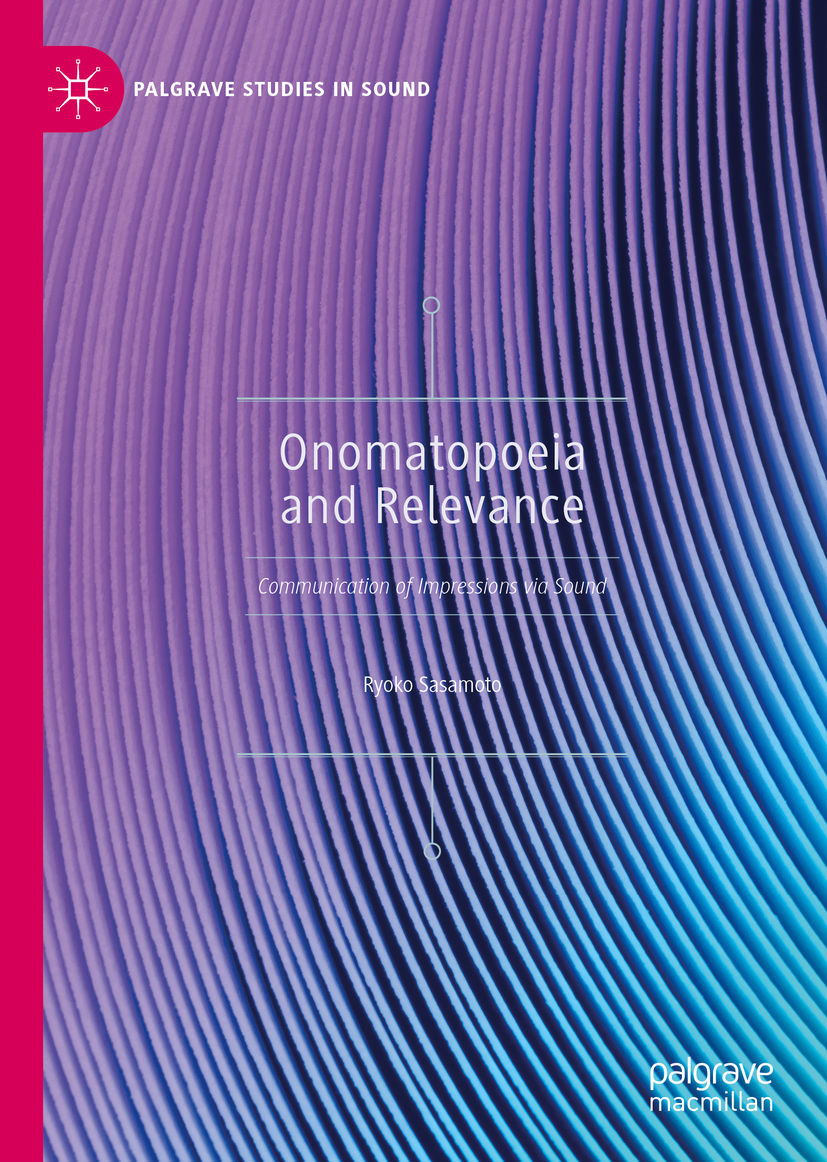Palgrave Studies in Sound
Series Editor
Mark Grimshaw-Aagaard
Musik, Aalborg University, Aalborg, Denmark
Palgrave Studies in Sound is an interdisciplinary series devoted to the topic of sound with each volume framing and focusing on sound as it is conceptualized in a specific context or field. In its broad reach, Studies in Sound aims to illuminate not only the diversity and complexity of our understanding and experience of sound but also the myriad ways in which sound is conceptualized and utilized in diverse domains. The series is edited by Mark Grimshaw-Aagaard, The Obel Professor of Music at Aalborg University, and is curated by members of the universitys Music and Sound Knowledge Group.
Editorial Board
Mark Grimshaw-Aagaard (series editor)
Martin Knakkergaard
Mads Walther-Hansen
Kristine Ringsager
Editorial Committee
Michael Bull
Barry Truax
Trevor Cox
Karen Collins
More information about this series at http://www.palgrave.com/gp/series/15081
Ryoko Sasamoto
Onomatopoeia and Relevance
Communication of Impressions via Sound
Ryoko Sasamoto
SALIS, Dublin City University SALIS, Dublin, Ireland
Palgrave Studies in Sound
ISBN 978-3-030-26317-1 e-ISBN 978-3-030-26318-8
https://doi.org/10.1007/978-3-030-26318-8
The Editor(s) (if applicable) and The Author(s) 2019
This work is subject to copyright. All rights are solely and exclusively licensed by the Publisher, whether the whole or part of the material is concerned, specifically the rights of translation, reprinting, reuse of illustrations, recitation, broadcasting, reproduction on microfilms or in any other physical way, and transmission or information storage and retrieval, electronic adaptation, computer software, or by similar or dissimilar methodology now known or hereafter developed.
The use of general descriptive names, registered names, trademarks, service marks, etc. in this publication does not imply, even in the absence of a specific statement, that such names are exempt from the relevant protective laws and regulations and therefore free for general use.
The publisher, the authors and the editors are safe to assume that the advice and information in this book are believed to be true and accurate at the date of publication. Neither the publisher nor the authors or the editors give a warranty, express or implied, with respect to the material contained herein or for any errors or omissions that may have been made. The publisher remains neutral with regard to jurisdictional claims in published maps and institutional affiliations.
This Palgrave Macmillan imprint is published by the registered company Springer Nature Switzerland AG.
The registered company address is: Gewerbestrasse 11, 6330 Cham, Switzerland
For my parents who supported me throughout my life, and for Diane, who taught me how to do research.
Acknowledgements
Prof. Diane Blakemore is the best supervisor one could ever wish for. While this book is not based on my PhD thesis, I couldnt have written this without having worked under her guidance. I still remember when I first met her. She gave me three extremely philosophical papers. I am certain that it was her way of assessing what I was capable of and how I work. Within a week or so of supervising me, she identified my strengthan eye for data with a bit of theory (in a tongue-in-cheek way!). Thats what I still domy research is firmly founded in theory, relevance theory in particular, while I have a very strong applied aspect with real data. If Diane hadnt identified my style of working then, I might not be doing this now. So, thank you, Diane!
Another very special person who inspired me is Olivia Rohan. Thank you, Olivia, for such inspirational discussions on onomatopoeia. I hope this book does you justice.
I have also had the privilege to meet the finest scholars in relevance theory. I was particularly privileged to work with Prof. Deirdre Wilson, who provided extremely insightful comments on earlier stages of my work on onomatopoeia.
I would also like to thank Tim Wharton for inspiring me to work on onomatopoeia and other aspects of meaning beyond verbal communication.
Kate Scott is another inspirationthroughout the process of writing this book, Kate and I encouraged each other and remotely worked together. Kate is an inspiration, a good friend, and a sounding board in oneone cannot wish for more.
I would also like to express my gratitude to friends and colleagues in SALISpast and present. In particular, I would like to thank three colleagues I always look up to: Aileen Pearson-Evans, Dorothy Kenny, and Minako OHagan. I hope that one day, I can support colleagues in the way you support me.
I should not forget how I started out as a Linguistics student. I wish to thank Prof. Seiji Uchida, Prof. Akiko Yoshimura, and Prof. Ayumi Suga of Nara Womens University, for guiding me thorough my early years in research. I would also like to thank friends who supported me throughout my student days, in particular, Kazuyo Murata, Rebecca Jackson, and Adam Gargani.
I wish to express my sincere gratitude to the publishers and manga-artists who gave permission for their copyright material to be included in this book, including Asumi Yoshino and Gekkan Korokoro Comic; Cookpad; Kani Doraku; Mieko Osaka and Hiyoko Club; ONE/Yusuke Murata and Shueisha; Rin Mikimoto and Kodansha; Usao Hirara and Neko Publishing; Yuto Tsukuda/Shun Saeki and Shueisha. I would also express my sincere gratitude to Cookpad Inc. and Dr. Jun Harashima of Cookpad Inc. for providing me with the user generated content parallel corpus.
This book is supported under the Faculty of Humanities and Social Sciences Book Publication Scheme, Dublin City University.
Last, but not least, I would like to thank Phil and Alfie for their support and patience. You keep me going.
Contents
List of Figures
List of Tables
1. Introduction
Onomatopoeia is often defined as words that mimic sounds. According to the Oxford English Dictionary (OED), it refers to the formation of a word from a sound associated with what is named. Standard English examples include buzz, meow, crash and splash. Onomatopoeia presents an interesting challenge to the assumption that the link between word form and meaning is completely arbitrary (de Saussure ), since the sounds of onomatopoeic words seem to resemble or imitate (at least part of) their interpretations. For example, there is something about the word buzz that resembles the sound made by a bee. Some scholars, therefore, argue that onomatopoeia poses a specific challenge for de Saussures notion of language arbitrariness .
Different terminologies are used to categorise words that fall within this description, such as mimetics, expressives, and ideophones (cf. Dingemanse and Akita ), supersedes what is generally covered as

